Review: 2015 Hyundai Sonata Limited 2.4

There are old Sonatas, and there are bold Sonatas, and starting now, any bold Sonatas you see are going to be old Sonatas.
That old, bold Sonata lifted Hyundai from casual-participant status in the American midsize game to the life of a full-time player. The timing was right, falling in the middle of the bailout mess. The quality and equipment levels were acceptable to a useful slice of the buying public. And the styling was ripped straight from the headlines — assuming the headline story of that particular day was “A Fuzzier Look At The First-Generation Mercedes CLS”. Plenty of flash, not much cash, and a warranty to ease your mind about the way your neighbor’s 1999 Elantra rusted out at the door seams.
To consolidate those gains and keep the Montgomery, AL plant running three shifts a day at full capacity, Hyundai’s elected to dial back the visuals and crank up the equipment levels, both standard and optional. They invited us to tour that plant and drive three variants of the new Sonata on a variety of suspiciously smooth Alabama highways and byways. Today we’ll cover the $33,375 Sonata Limited Ultimate Package; later on in the week we’ll have the Sport 2.0T and Eco 1.6T models.
It’s fair to say that Hyundai has successfully met about ninety-five percent of their stated goals with this new Sonata. In the press preview, they promised us a large, roomy car — and that it is. They promised us a rigid car that matched the class leaders for solidity — and if anything they’ve exceeded that goal. They promised segment-unique equipment like stop-start laser cruise control, panoramic roof, ventilated seats, all at a price that meets or beats the value entries — and the numbers don’t lie.
Start with the Sonata’s size and weight. By removing the option of a V-6, Hyundai has moved the cabin forward and secured the only “EPA Large Car” classification in the segment. It’s the widest of the Camcord/Sonatoptima/Fusionbu crowd and it beats most of them in most measurements. After some prodding on my part regarding Hyundai’s ability to cut weight in this car the way Honda did with the most recent Accord, their chief vehicle engineer retorted that the old Sonata was among the lightest in the segment and that this new car would weigh just six pounds more. The Accord’s lighter, but you need to take a manual transmission to have a measurable gap. The number I was given for a base 2.4 Sonata was 3,259 pounds; Honda quotes 3,254 for the LX CVT.
So what we have here is a serious effort at delivering space without a weight penalty and the results are convincing. The Sonata never feels cramped, front or rear. In particular, the relative lack of tumblehome really imparts an airy feel to the cabin and if the windowsills aren’t quite Accord-low they are easily a match for the Camry or Altima. It doesn’t need to be said, but in this respect the Malibu isn’t even a competitor — which is perhaps why the press materials accidentally showed the previous-gen Malibu. Hyundai’s long past having to worry about fighting General Motors.
A press of the metal start button, shared with the Genesis, and the 2.4L thrashes into life. Our test Sonata was in Limited Ultimate trim, which for over $33,000 offers you a BMW 7er’s worth of equipment. But you still have to take that lumpenprole big-inch four-cylinder, coupled to a six-speed automatic. Hyundai’s people refused to get defensive when I pressed them on this: “There are hundreds of thousands of Sonata owners who are very satisfied with this proven six-speed unit and they are coming back for more of the same.” Sure, but if any of them accidentally experience the four-cylinder powertrains in the Accord, Camry, or Altima, they won’t like what they find here very much. On the numbers, the Sonata is fine, offering about the same amount of power and economy as everyone else. On the move, however, it’s coarse and frequently whines in protest when asked to climb a hill.
The transmission is slow-witted and when the lever is moved over to Tiptronic mode it takes a full inch or more of meaningless travel in either direction before the desired gear is selected right as the level hits the mechanical stop. Annoying, the “+” and “-” selections are backwards, with “+” being towards the dashboard and “-” away from it. Hate to say it, but the Sonata really disappoints in the powertrain department, and my recent drive of a CVT Accord four-cylinder just hammered that home.
If you can let that go, however, you’ll find plenty else to love about the interior of this Sonata Limited Ultimate. The seats are brilliant; supportive, with strong ventilation or heating, they really satisfy and the range of adjustment is considerable. There’s even an auto-slide for entry and exit a la Town Car. There is a wide range of high-quality interior materials on offer, with the “wood” trim and the touch-points leather coming in for particular commendation. This is an expensive vehicle — indeed, I cannot readily think of a naturally-aspirated non-hybrid four-cylinder car that costs more — but there is clear value everywhere you look. Two false notes are struck by the much-ballyhooed “driver-focused” center stack shape that looks oddly like something from the original season of Battlestar Galactica and the LCD displays for time and temperature that would not be hugely out of place in a digital watch from that same era. Maybe there’s a retro thing going on of which I wasn’t aware.
This being the year 2015, or at least the model year 2015, there’s a requirement for full-featured navitainment and Bluetooth integration. The Sonata delivers ably with a high-resolution eight-inch center display, seamless ability to work with my old Samsung Galaxy S3, and a “BlueLink” group of external satellite features. The stereo is reasonably good although it isn’t very loud, offering reasonable clarity, focus, and adjustability. It’s a long reach to the touchscreen but if you can make it you’ll be satisfied with what Hyundai says is a more sensitive interface that allows the user to perform drags and slides on the navigation screen. (A tablet-style “pinch” or “expand” is not available.)
What’s the rest of the drive experience like? As Hilary said, “what difference does it make?” But it would be unfair not to mention just how eerily quiet the Sonata is and how solidly it thumps on the bumps. I’d want a full week on Midwestern frost-heaved roads to really evaluate the ride, but in Alabama it was brilliant. Steering and brake feel are thoroughly artificial and strangely heavy, perhaps because the Hyundai customer might associate light steering with some cheap-ass Pontiac Grand Am. A “Drive Mode” button between the shifter and the electronic parking brake produces convincing further stiffening in steering and engine response.
The restrained styling, superior NVH, and unbeatable features list will make this Sonata a dangerously effective rival for the Fusion, but more than that Hyundai’s own Genesis is probably going to face some encroachment from the Limited Ultimate. It’s almost an Avalon competitor more than a Camry clone, and a few minutes behind the wheel of the relatively quick-witted four-cylinder Camry SE or XLE would drive the point home.
For this money, you can get an Accord Touring. Dynamically, the V-6 Touring murders this Sonata — but how often would you call on the power of the J35 six-cylinder, and how often would you miss the ventilated seats and the pano roof and the Hyundai’s ability to drive itself in traffic? How often would you hustle the big Honda down a twisty road, and how often would you want the Sonata’s vault-like isolation from the traffic outside?
In the areas of feature count, interior room, and quiet solidity, this is a genuine advance in the segment and should be recognized as such. The problem is that you can’t get the good equipment with the preferred engine. Come back tomorrow and we’ll talk about what you do get when you choose the “Turbo” logo. In the meantime, feel free to think of the not-so-bold Sonata as a Korean take on an Oldsmobile Cutlass Brougham. You remember how popular that was, right?
(Lodging and meals were provided courtesy of Hyundai, who also offered us transportation which we ended up declining due to travel conflicts.)

More by Jack Baruth
Latest Car Reviews
Read moreLatest Product Reviews
Read moreRecent Comments
- Lichtronamo Watch as the non-us based automakers shift more production to Mexico in the future.
- 28-Cars-Later " Electrek recently dug around in Tesla’s online parts catalog and found that the windshield costs a whopping $1,900 to replace.To be fair, that’s around what a Mercedes S-Class or Rivian windshield costs, but the Tesla’s glass is unique because of its shape. It’s also worth noting that most insurance plans have glass replacement options that can make the repair a low- or zero-cost issue. "Now I understand why my insurance is so high despite no claims for years and about 7,500 annual miles between three cars.
- AMcA My theory is that that when the Big 3 gave away the store to the UAW in the last contract, there was a side deal in which the UAW promised to go after the non-organized transplant plants. Even the UAW understands that if the wage differential gets too high it's gonna kill the golden goose.
- MKizzy Why else does range matter? Because in the EV advocate's dream scenario of a post-ICE future, the average multi-car household will find itself with more EVs in their garages and driveways than places to plug them in or the capacity to charge then all at once without significant electrical upgrades. Unless each vehicle has enough range to allow for multiple days without plugging in, fighting over charging access in multi-EV households will be right up there with finances for causes of domestic strife.
- 28-Cars-Later WSJ blurb in Think or Swim:Workers at Volkswagen's Tennessee factory voted to join the United Auto Workers, marking a historic win for the 89- year-old union that is seeking to expand where it has struggled before, with foreign-owned factories in the South.The vote is a breakthrough for the UAW, whose membership has shrunk by about three-quarters since the 1970s, to less than 400,000 workers last year.UAW leaders have hitched their growth ambitions to organizing nonunion auto factories, many of which are in southern states where the Detroit-based labor group has failed several times and antiunion sentiment abounds."People are ready for change," said Kelcey Smith, 48, who has worked in the VW plant's paint shop for about a year, after leaving his job at an Amazon.com warehouse in town. "We look forward to making history and bringing change throughout the entire South." ...Start the clock on a Chattanooga shutdown.



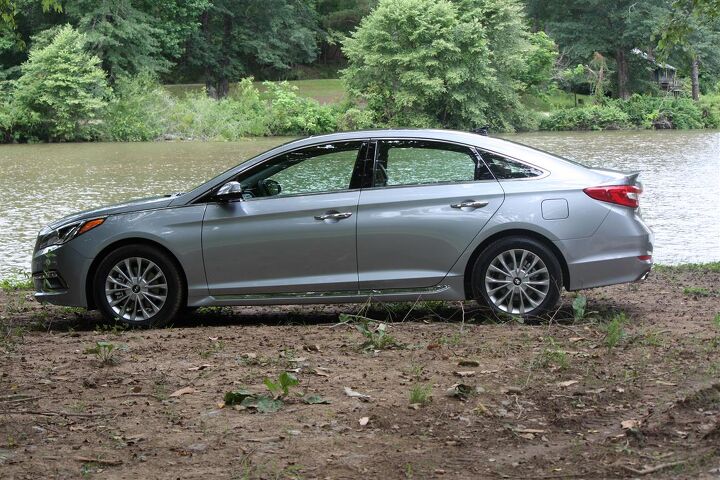






















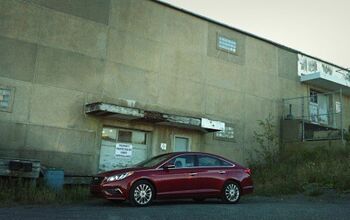
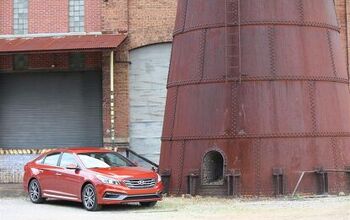
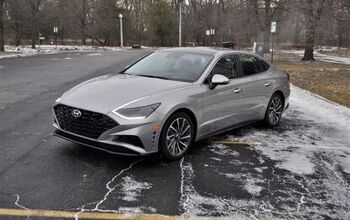

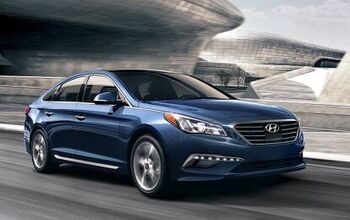










Comments
Join the conversation
Which Oldsmobile Cutlass Brougham are you referring to the Supreme, Ciera or Calais?
My friend just bought a red 2015 Sonata Limited 2.4 automatic. In no way is the 2014 Camry 2.5/6 speed auto superior to his Hyundai. The Hyundai 2.4 is quicker, smoother, quieter and better on fuel than the Camry setup. For the same basic price as a mid level Camry Se Sport this new Hyundai offers a full 32 extra features that the Camry lacks and the interior quality/ambiance is vastly superior.